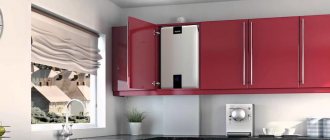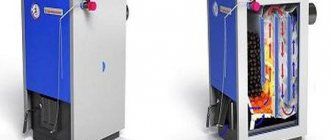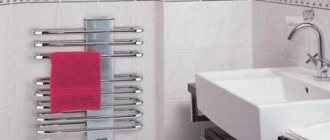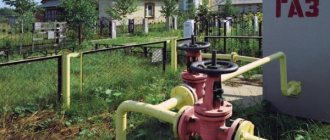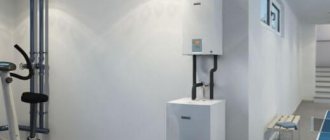Just 20 years ago, life in your own home was full of worries and associated with constant inconveniences. Unlike city apartments, the lack of central heating and sewerage created a lot of additional problems, especially in the cold season.
Today, building a country house and equipping it with all communications would seem to be no problem, but there are many nuances associated with the selection of heating devices and calculations of their power.
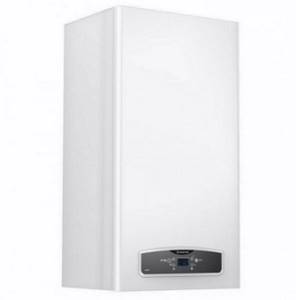
Choosing a boiler, what to look for
So, what do you need to know to choose a boiler? There are a number of nuances, taking into account which you can purchase a device that ideally meets all consumer needs.

To do this, when familiarizing yourself with the characteristics of the units, you must:
- find out the pros and cons of their types;
- decide on the choice of fuel on which it will operate;
- correctly calculate the power of the device;
- decide whether it will serve only for heating the room or will also combine the function of heating water;
- choose a location for the equipment and its size.

If you work through these issues in advance, you can achieve significant cost savings without loss of heat.
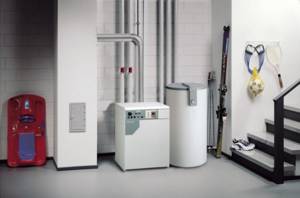
What should be the location for installing equipment?
Depending on the location of the boiler, its dimensions and weight are selected. There is no point in installing a bulky device in a small technical room.
Some types of appliances with a power of up to 100 kW are allowed to be installed in the kitchen. Others require a separately equipped boiler room that meets safety requirements.

Installing the boiler on the floor
A floor-standing boiler in the kitchen is installed in a pencil case, box or lower racks of kitchen cabinets. Most often they are sold complete with the main unit. In the absence of a ready-made device, they create home-made structures from plasterboard, chipboard, plywood or other material, and protect the walls from heating with shielding inserts.
Decorate the door with a forged lattice or mesh in a frame. The boiler will look like a designer object if you decorate it to imitate a fireplace. Cover the surface of the casing with thermostatic paint, dry it and make the corresponding image.

In addition to applying design ideas during installation, it is necessary to take into account regulations, follow recommendations and rules that guarantee reliable operation.
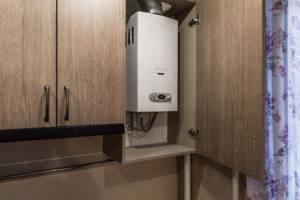
Types of heating devices
First of all, it should be noted that there are two types of boilers for heating a home:
- single-circuit, which are designed only for heating the area;
- double-circuit, combining heating and water heating functions at the same time.

Of course, a single-circuit boiler is cheaper than its multifunctional counterpart, but do not forget that you will have to use additional devices, such as a boiler, to heat the water.
In this case, it will take much more money to purchase two units than to buy a model that combines two characteristics.
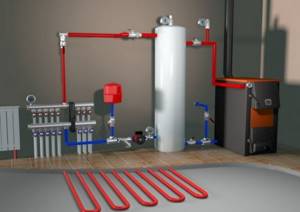
In addition, installation of single-circuit equipment is more expensive. It is ideally designed for a room in which there is no need for hot water supply.
Check it out here too!

How to make a homemade metal detector - the best diagrams, instructions. Review of proven options for creating a simple do-it-yourself metal detector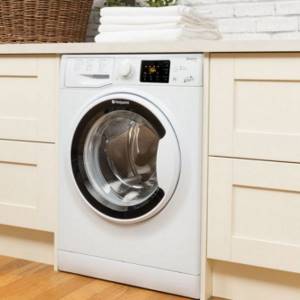
How to choose a washing machine: advice from professionals, the main subtleties of choosing a reliable and high-quality machine. Types, types, programs and functions
- Homemade lanterns with your own hands: step-by-step instructions on how to make a beautiful and effective lantern (110 photos)
In the case of a double-circuit unit, difficulties will arise due to interruptions in heating due to intense consumption of hot water. In this situation, it is worth paying attention to the presence of a storage water heater in the design.
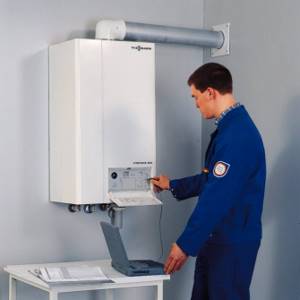
Such boilers are not designed to serve large rooms; they are best used in a small house, where due to lack of space it is impossible to equip a real boiler room.
Types of equipment
When wondering which boilers are more efficient for heating a home, it should be noted that along with the difference in types of equipment, these devices are also divided into types that depend on the fuel used.
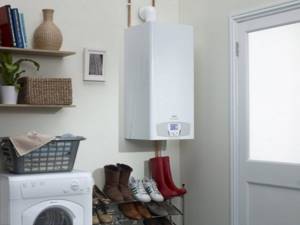
Types of boilers:
- solid fuel - burns wood, peat, coal;
- liquid fuel - diesel fuel;
- gas;
- electrical;
- universal - having the ability to switch from one type of fuel to another.
Check it out here too!
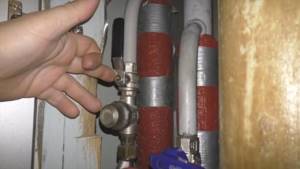
Replacing a pressure tap - a step-by-step description of how to change a pressure tap with your own hands (80 photos + video)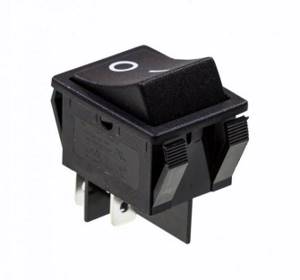
What is an acoustic switch: device, operation, types and features of the device (100 photos)

Low and high pass filter: making frequency filters and how to create high-end circuitry (95 photos + video)
The choice of fuel should be determined according to the following categories:
- availability in a specific region;
- price;
- cost-effectiveness;
- energy efficiency;
- difficulty of operation.

Solid fuel boilers
The main fuel is wood. It also works on peat or sawdust. This type of boiler is suitable for cities and villages where the infrastructure is poorly developed.
But at the moment, the classification of boilers is as follows: integrated burners, integrated burner design, combustion chamber design, control method.
Solid fuel boilers
They are considered obsolete, but are still in high demand in some post-Soviet countries. Their designs continue to be improved, and modern materials and technologies are used in manufacturing.
- availability and cheapness of fuel;
- energy efficiency;
- autonomy.
The disadvantages include the need for frequent (every 6-18 hours depending on the model) replenishment of fuel.

The exception is boilers operating on pellets; their designs allow replenishing fuel reserves every few days. Unfortunately, pellets themselves, despite all their positive qualities, are a fairly expensive type of solid fuel.
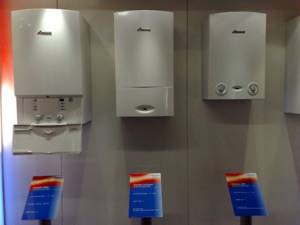
Disguising the boiler in kitchen furniture
It is possible to hide the boiler in the kitchen in wall cabinets, subject to strict safety standards. The furniture facades will cover the device along the front surface. Or create a homemade box from sheets of plasterboard, chipboard and paint it to match the color of the furniture. When hiding equipment from view, it is necessary to use non-flammable materials.
The most important thing for proper and safe operation of the boiler is ventilation. To circulate air in the upper and lower parts of the cabinet, make holes with a hacksaw or jigsaw. The camouflage cabinet must be well ventilated. Protect walls from overheating.
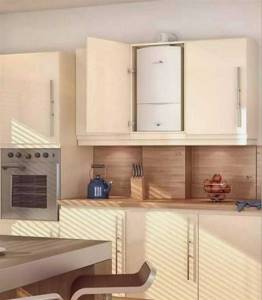
Electric boilers
It is worth purchasing only if it is not possible to install other types of heating devices, since due to the high cost of electricity, using them is very expensive.
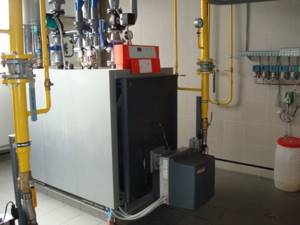
The advantages are:
- low cost;
- ease of installation;
- small size and weight;
- no open fire;
- ease of maintenance;
- no need for mandatory equipment of a special room.

Minuses:
- cost of electricity;
- due to the high power, it is necessary to connect to a three-phase network;
- sensitivity to power outages.

Gas boilers
The best types of boilers for heating. There are floor or wall mounted. Economical and easy to use.

They are most effective when connected to the main fuel supply. When using cylinders or gas holders, they are less economical, but still more profitable than other types.
- low energy price;
- does not require specific maintenance;
- full automation of work.
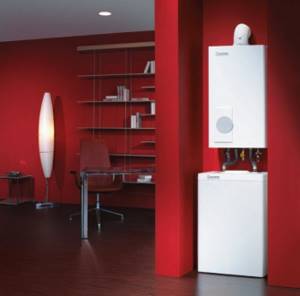
Flaws:
- dependence on electricity to automate gas supply control;
- installation of automation that controls leakage;
- sensitivity to pressure surges;
- the need to obtain permission to install equipment.

Boiler types
Gas boilers. Very inexpensive to operate and almost always supplied with fuel. Among the variations: the operating principle can be either from natural gas (direct connection to the gas main) or from liquefied gas, such as propane.
The boilers are autonomous. A classic unit that only requires access to gas. In the event of a sudden power outage, the boiler will continue to operate, since it is not dependent on electricity.
Economical boilers. Doesn't work without electricity. There is no provision for a spare boiler for emergency shutdowns.
According to the installation method they are distinguished:
- Wall-mounted boilers.
- Floor-standing boilers.

There are also single-circuit boilers, as well as double-circuit boilers. Three-circuit boilers are also extremely rare, but they are among the most expensive. More detailed information is available in the specifications for each boiler.
Universal boilers
They are attractive due to the interchangeability of fuel types without affecting the thermal characteristics of the equipment.

Can be:
- multi-fuel - alternately work on both electricity and solid fuel, diesel or gas;
- dual-fuel - they combine only two types of fuel in a combination depending on the specified characteristics of the device.

They require competent maintenance and careful operation.
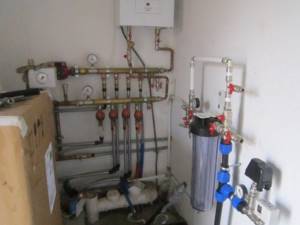
So how do you choose a boiler for heating a private house?
To make it easier to navigate when choosing, let's systematize the information. Let's look at the most typical requirements that influence the choice of boiler type:
- The most economical heating. The cheapest heating options are wood/coal and gas. Next come pellets, liquid fuel and electricity. In general this is true, but the situation greatly depends on the region. In some places electricity will be cheaper, in others liquid fuel will be cheaper. In general, you have to count.
- Degree of autonomy. The most automated are gas, electric and pellet units. They can be left at work unattended. Liquid fuel ones require a little attention. The least automated are solid fuel ones.
- Difficulty connecting. The most difficult thing is with the registration and connection of gas. There may be problems with allocating power for electric heating - not all substations have a reserve. With the rest, everything is simple: the main thing is to follow the recommendations for safe installation.
If you take into account the availability and affordability of fuel, making your choice is not difficult.
Power calculation
After a decision is made in favor of the type of fuel, the power of the equipment should be determined.
How to find out the required boiler power for heating? To do this, you need to be guided by an approximate calculation algorithm, in which heating a room with a volume of 30 cubic meters will require 1 kW and a mandatory reserve of 20%.
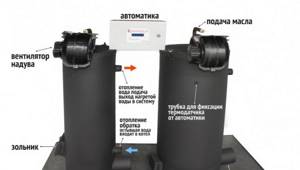
In addition, it is worth considering:
- Device efficiency;
- number of users;
- level of thermal insulation (what materials the house is made of);
- level of heat loss (number and area of windows and doors);
- climatic conditions;
- Will there be water heating?
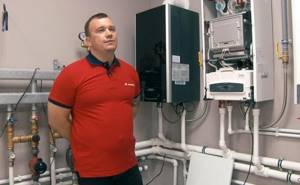
Keeping these nuances in mind, it will be problematic for a non-specialist to independently calculate the boiler power.
Even using special design standards, an amateur can make many mistakes and, as a result, make the wrong device.

In this case, the best solution would be to use the help of a professional who will not only determine the required power of the device, but also tell you in which case you can save money.
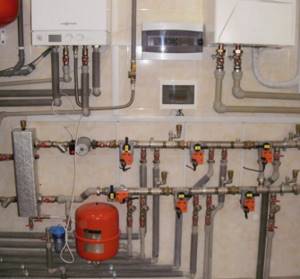
Calculation of heating boiler power
The main criterion when choosing a boiler is the area of the required heated space and the technical ability of the boiler to operate. It is not recommended to take it “back to back”, because you may need to increase the power, but the installation is already working at its limit.
Also, do not forget about the thermal insulation of the premises, whether there is any at all. Climatic conditions are also important, because if one boiler copes in the southern winter, then it is far from a fact that it will be able to work no worse if it is installed in the far north, so the boiler must be chosen correctly for good heating.
Basically, such calculations are carried out by specialists - heating engineers, who will be able to calculate much faster and better the necessary parameters of the required installation for normal heating of the entire circuit and will tell you what is needed in order to choose the best heating boiler.
Useful tips
In addition to the above, experts offer some more tips for choosing boilers:
- pay attention to whether service is included in the purchase and sale agreement; if not, it is better to conclude it additionally or look for a product where it will be indicated.
- carefully look at the manufacturer’s warranty periods and obligations;
- collect information and reviews about the manufacturer and this boiler model.
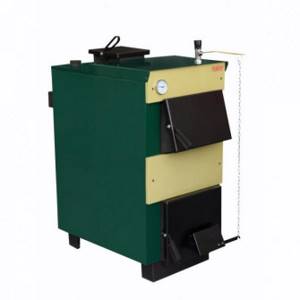
Decoration of heating equipment
Any equipment must be harmoniously integrated into the overall interior of the kitchen and beautifully decorated. It is possible to close the boiler in the kitchen with its open placement on the wall using the decoupage technique, choosing the appropriate pattern.
Note!
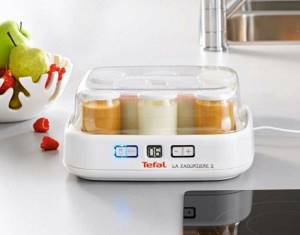
Yogurt maker - choice of varieties, pros and cons of use. The best photo reviews of models with descriptions of options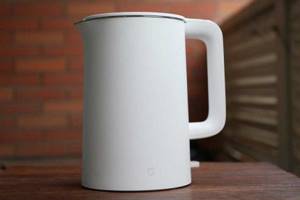
The best electric kettles - types of functions and differences between kettle models. Reviews of popular manufacturers + 140 photos
- Electric hob: TOP-110 photos of the best models. Advantages and disadvantages of use + tips for choosing
An excellent solution would be to paste it with film or paint it in the desired color for metal. If desired, you can create a real art object from a device that is not very aesthetically pleasing by using acrylic painting or airbrush techniques.

Various methods of camouflage and decoration will help you create an original design for your kitchen boiler and maintain the desired style.
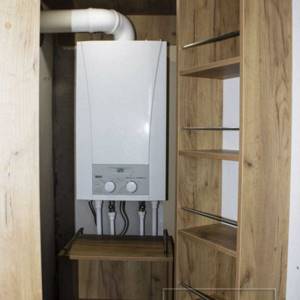
A good boiler will warm the house in any cold weather
If heat and hot water are supplied to city apartments centrally, and the service company is responsible for this, then in order to organize modern heating and water heating, the owners of a private house themselves must purchase the necessary equipment.
In this case, a competent selection of a boiler for heating will help not only keep the house warm, but also use hot water, as well as save money on maintenance and upkeep.
Video description
Visually about choosing power in the video:
So how to do the calculation? In general, it is best to contact experienced specialists with this. The fact is that when calculating, you need to take into account a huge number of different factors:
- number of floors;
- ceiling height;
- the presence or absence of thermal insulation, as well as its type;
- year the house was built;
- wall material;
- selected method of water heating;
- climate zone.
And that's not all! It also matters whether the boiler is selected for townhouses or for ordinary houses (the former are usually warmer, although there are plenty of nuances here too). The calculation is also affected by the presence of other heating sources in the building, for example, heated floors. In addition, an experienced specialist always clarifies what the average room temperature should be. After all, there is a big difference between + 15 and + 23 degrees Celsius.
You can make an approximate calculation like this: you need to multiply the area of the house by the climate zone indicator, and divide the resulting amount by 10. This option is suitable for standard buildings with a ceiling height of up to 3 meters.
Let's say the building is located in the northern regions of Russia. There the climate coefficient is 2 kW. Therefore, the boiler must have a power of 20 kW. But for a double-circuit one, this figure must be multiplied by ¼. That is, the result is 25 kW. And remember that he is exemplary!
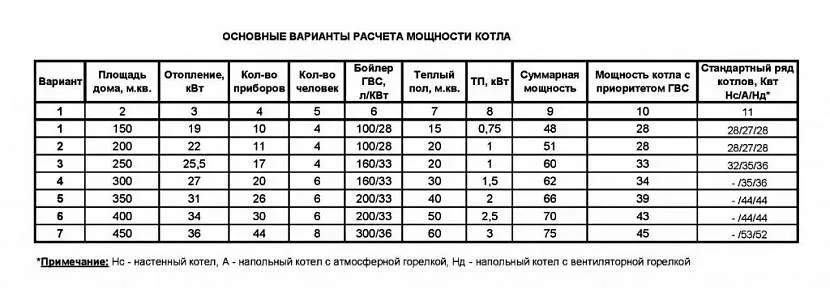
For an initial assessment of power, you can use the table Source tarifi.info
Which boiler is best for a private home: the issue of the chimney
Boilers with an open combustion chamber, as a rule, do not have a chimney. But in this case, it is necessary to ensure the removal of combustion products. And keep in mind that some part may still get into the air in the room. Therefore, for the safety of people, it is best to install such boilers in a separate room.
If we are talking about a closed chamber, then forced draft is created there. And since the size and cross-section of the chimney do not affect the passage of air flow (blowing depends on the fan), installation is carried out using a coaxial pipe. It is easy to install and has a small diameter.
Turbine boilers are another option that is popular. Here the air flow is provided by a special fan. Combustion products are discharged directly to the street. Moreover, the hole is usually small (it is visible from the outside).
When choosing this model, you can refuse to organize a chimney. But turbine structures need to be cleaned from time to time: if the entrance becomes clogged with leaves, for example, the boiler will stop working.

Ventilation of a turbine boiler Source spetsotoplenie.ru
Each solution has its own advantages and disadvantages. But remember: only models with natural draft are considered non-volatile! So if electricity is often cut off in your locality or area, then the only option would be products with natural draft and without a chimney.
Photos of heating boilers
Read here - How to make an electric generator - a detailed description of how to assemble a generator with your own hands at home (135 photos)

